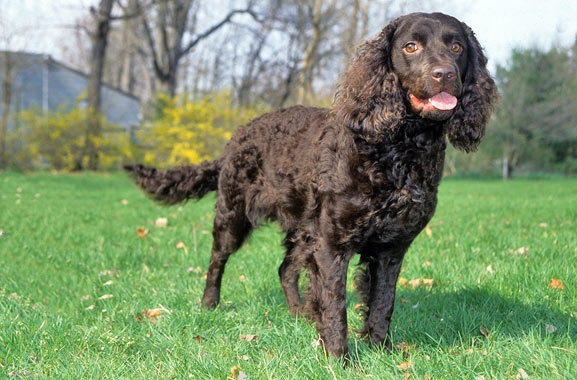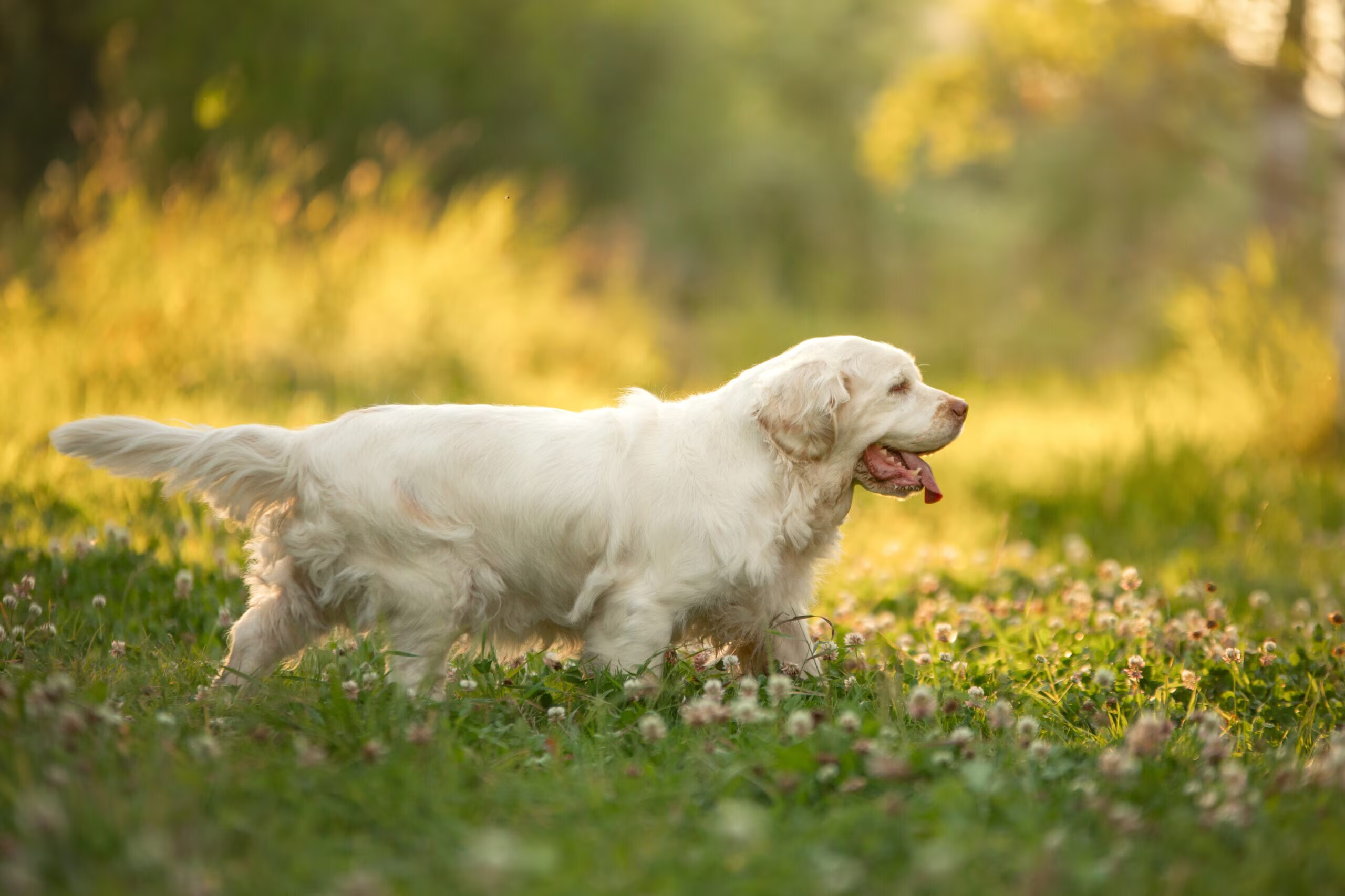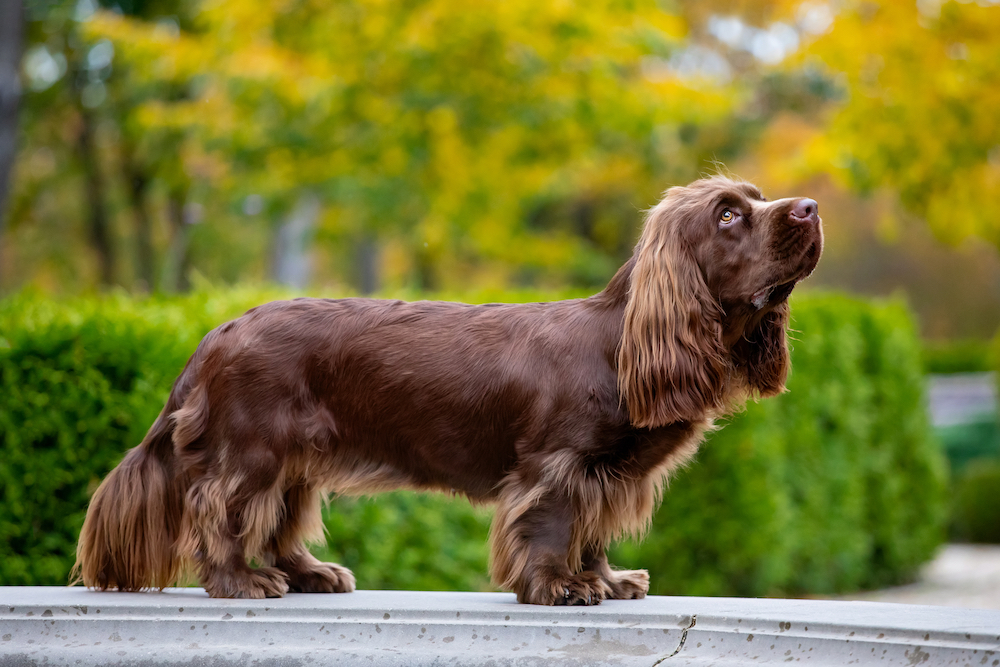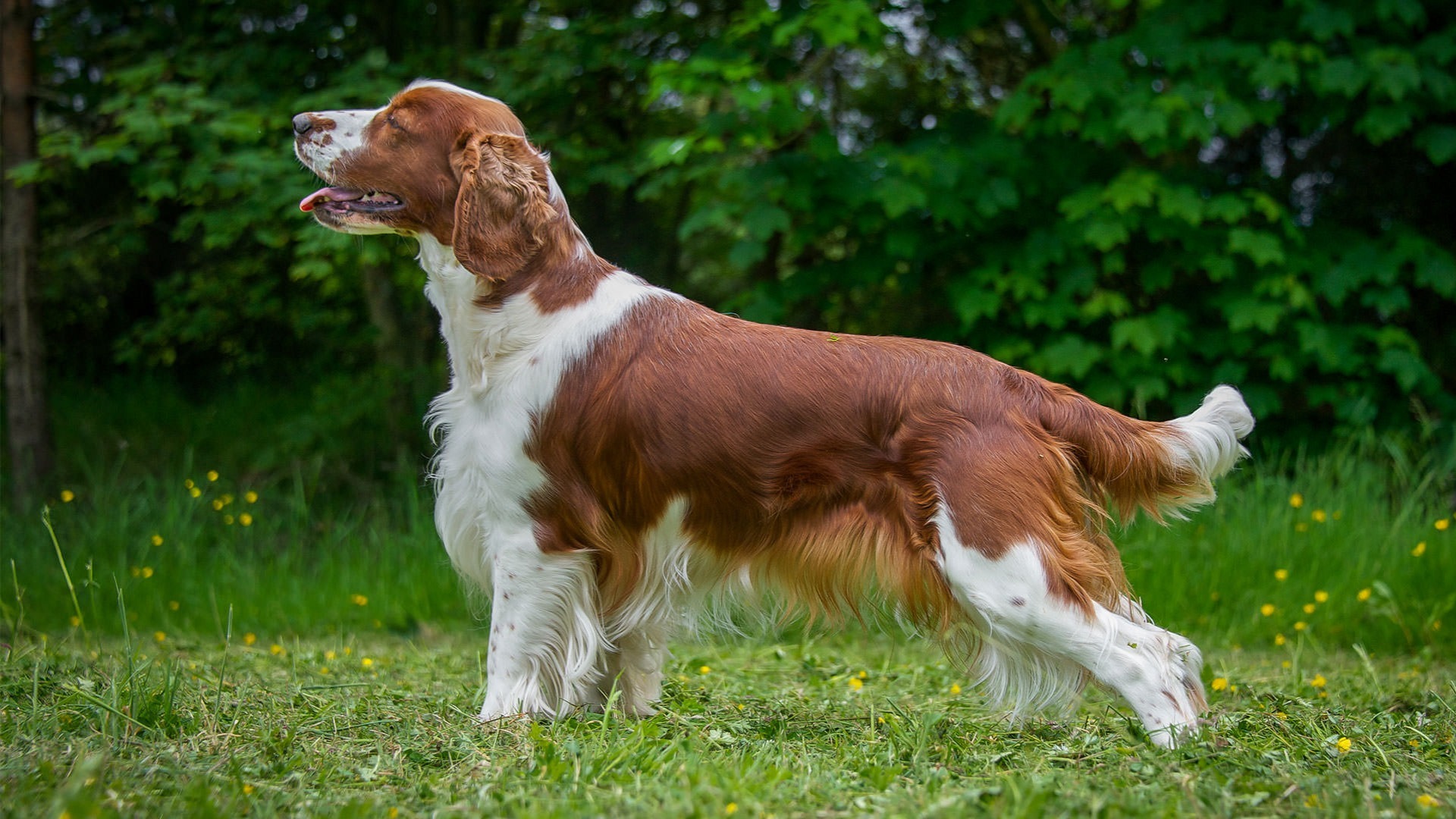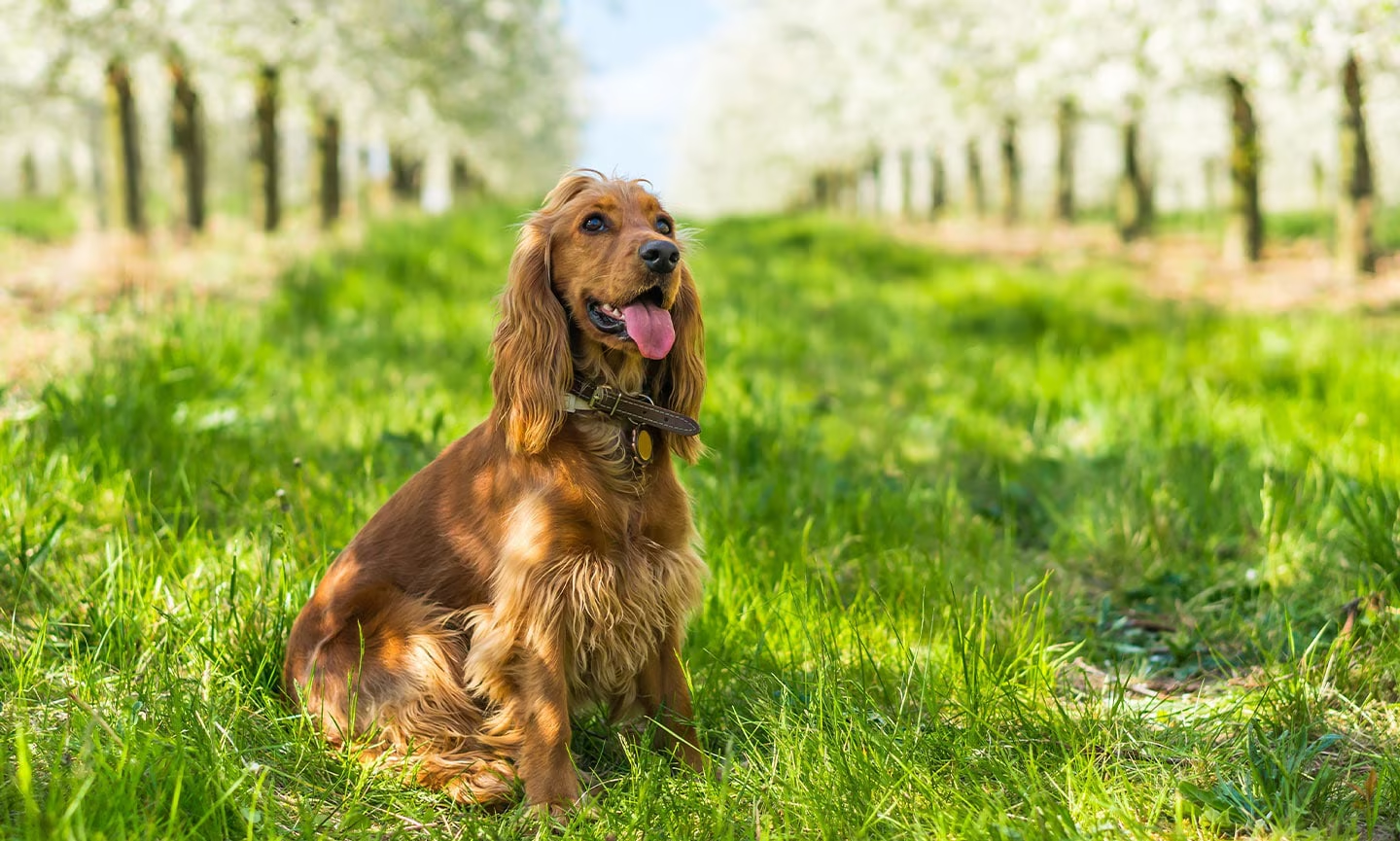Among the dozens of spaniel breeds that grace our world, only one can claim to be truly American from start to finish. The American Water Spaniel stands as a testament to practical American ingenuity – developed not by aristocrats or kennel clubs, but by everyday hunters who needed a versatile, hardworking companion for the challenging hunting conditions of the Upper Midwest.
At pawtrix.wiki, we believe every breed deserves recognition, but there’s something special about highlighting a dog that represents genuine American heritage. Developed in the Great Lakes region during the late 19th century, the American Water Spaniel (AWS) was created to handle the diverse hunting conditions of Wisconsin and Minnesota – versatile enough to work in dense forests, marshy wetlands, and open water within the same hunting day.
What makes this breed particularly fascinating is how it nearly disappeared despite its remarkable capabilities. Even today, with under 3,000 American Water Spaniels estimated worldwide, they remain one of the rarest AKC-recognized breeds. Yet for those lucky enough to know them, they represent an ideal blend of hunting prowess and family companionship that few breeds can match.
Throughout this guide, we’ll explore everything that makes the American Water Spaniel special – from their development by practical Midwestern hunters to their unique physical and temperament traits, care requirements, and whether they might be the perfect dog for your lifestyle. By the end, you’ll understand why enthusiasts are so dedicated to preserving this distinctive American treasure.
American Origins: The Practical Hunter’s Dog
Unlike many breeds with centuries of documented history, the American Water Spaniel’s development occurred relatively recently and with less formal record-keeping. Their story is uniquely American – practical, resourceful, and focused on creating a dog that could do everything a working hunter needed.
Development in America’s Heartland
The American Water Spaniel emerged in the Upper Midwest, primarily Wisconsin and Minnesota, during the late 1800s. The breed was developed by market hunters who needed a versatile dog capable of working in the region’s diverse hunting conditions – from thick forests to marshy wetlands and open water. These hunters didn’t care about creating a dog for show rings; they needed a practical working companion that could perform multiple roles.
The exact breeds that contributed to the AWS are not definitively documented, but they likely included:
- The now-extinct English Water Spaniel
- Irish Water Spaniel
- Curly-Coated Retriever
- Field Spaniel
- Possibly native American Indian Dogs
What set these dogs apart was their perfect adaptation to the specific hunting conditions of the region. They were compact enough to work in a small boat or canoe, tough enough to handle cold water, and versatile enough to both flush upland game and retrieve waterfowl – all within the same hunting day. This versatility was crucial for hunters who couldn’t afford to maintain multiple specialized hunting dogs.
Dr. Pfeifer and Breed Recognition
The American Water Spaniel might have disappeared entirely if not for the efforts of Dr. Fred J. Pfeifer of New London, Wisconsin. In the early 20th century, as market hunting declined and larger retriever breeds gained popularity, the AWS population dwindled dramatically.
Dr. Pfeifer recognized the value of these versatile dogs and established the first kennel dedicated specifically to breeding American Water Spaniels. He worked tirelessly to gain recognition for the breed, succeeding first with the United Kennel Club in 1920 and finally with the American Kennel Club in 1940.
In 1986, the American Water Spaniel was named the State Dog of Wisconsin, honoring its deep connection to the region’s hunting heritage. Despite this recognition, the breed remains rare, with annual AKC registrations typically numbering fewer than 200 dogs.
Modern Conservation Efforts
Today, the American Water Spaniel Club works diligently to preserve this unique breed, focusing on maintaining both working ability and genetic diversity in the very small population. They encourage participation in activities that showcase the breed’s natural abilities while carefully monitoring breeding practices to ensure health and temperament remain strong.
Their rarity has actually helped maintain their working character, as they’ve largely avoided the split between show and field lines that has affected many sporting breeds. Most AWS breeders value both proper structure and working ability, maintaining the breed’s original purpose as versatile hunting companions.
Modern American Water Spaniels can still be found doing what they were created for – hunting in the marshes and forests of the Upper Midwest – while also excelling in a variety of dog sports and, of course, serving as devoted family companions.
Distinctive Appearance: The All-American Hunting Dog
The American Water Spaniel has a distinctive appearance that clearly reflects its development as a practical, versatile hunting dog in the challenging environments of the Upper Midwest.
Size and Structure: Compact Powerhouse
American Water Spaniels are medium-sized dogs with a solid, muscular build:
- Height: 15-18 inches at the shoulder
- Weight: 25-45 pounds (males typically larger than females)
- Body: Slightly longer than tall, with substantial bone for size
- Chest: Deep and well-developed for endurance and swimming
- Overall impression: Balanced, athletic, and robust without being heavy
This compact size was intentionally developed to create a dog that could fit comfortably in a small boat or canoe – essential for the market hunters who used these dogs in the marshy waterways of Wisconsin. Despite their moderate size, they possess surprising strength and stamina, allowing them to work tirelessly all day in challenging conditions.
The Distinctive Coat
Perhaps the most immediately recognizable feature of the American Water Spaniel is their unique coat:
- Texture: Dense, curly to marcel (wavy) outer coat with protective undercoat
- Color: Always solid liver, brown, or chocolate; occasional white marking on toes or chest
- Water-Resistance: Naturally oil, providing excellent protection in cold water
- Head: Often has looser curls or waves compared to body
- Purpose: Designed specifically for protection in cold water and harsh cover
The coat’s texture can vary from uniform tight curls similar to a Curly-Coated Retriever to a more wavy pattern called “marcel” (named after a style of hair waving popular in the early 20th century). Either type provides excellent protection when working in cold water and dense cover.
The rich brown color served a practical purpose as well, providing natural camouflage in the marshy environments where these dogs typically worked. Unlike some sporting breeds with varied color patterns, the AWS is always a solid liver/brown, reflecting the pragmatic approach of its developers.
Distinctive Head and Expression
American Water Spaniels have a characteristic head and expression:
- Head: Moderately long with a clearly defined stop
- Muzzle: Square and strong, of moderate length
- Eyes: Widely spaced, hazel to dark brown, slightly rounded
- Ears: Long, wide, and lobular, set slightly above eye level
- Expression: Alert, intelligent, and often described as “mildly worried”
That characteristic “mildly worried” expression comes from their alert, attentive nature combined with slightly raised eyebrows. It gives them a thoughtful, almost human-like quality that owners find endearing. Their eyes should never be yellow (which would be a fault according to the breed standard), instead showing rich hazel to brown colors that complement their coat.
Movement and Presentation
The American Water Spaniel moves with purpose and efficiency:
- Gait: Balanced, ground-covering stride
- Presence: Alert and attentive without nervousness
- Tail: Medium length, curved slightly upward when alert, active when working
- Overall impression: A practical, no-nonsense working dog without exaggeration
Nothing about the AWS is extreme or exaggerated – they epitomize the practical American approach to function over flash. Their movement reflects their development as dogs that needed to cover varied terrain efficiently rather than with showy action. When alert or working, their curved tail action is distinctive and shows their engagement with their surroundings.
The American Water Spaniel Temperament: Versatile and Devoted
Beyond their distinctive appearance, American Water Spaniels possess a temperament that combines the best qualities of sporting dogs with some unique characteristics that reflect their development as all-purpose hunting companions.
The Devoted Partner
Perhaps the most defining quality of American Water Spaniels is their extraordinary devotion to their people:
- Deeply bonded with their families
- Typically focus their attachment on one or two primary people
- Prefer to be where their people are at all times
- Sensitive to their owner’s moods and emotions
- Work to please out of genuine connection rather than blind obedience
This devotion stems from their development as personal hunting companions rather than kennel-kept field dogs. Market hunters worked closely with their dogs day in and day out, creating animals that formed strong partnerships with their handlers. Modern AWS still show this trait, often becoming deeply attached to their owners and sometimes experiencing separation anxiety if not properly conditioned to alone time.
Their sensitivity makes them excellent at reading their people, often seeming to anticipate needs and responding intuitively to subtle cues. This made them excellent hunting partners and translates to remarkable companionship in family settings.
The Versatile Worker
True to their heritage, American Water Spaniels maintain strong working drives:
- Natural hunting instincts for both upland game and waterfowl
- Strong retrieve drive, often showing natural tendencies without formal training
- Excellent noses with impressive scenting ability
- Determination and persistence in difficult conditions
- Problem-solving intelligence rather than rote obedience
These working traits create dogs that excel in various activities beyond traditional hunting. They typically love water work, retrieving games, and scent-based activities. Their intelligence is practical rather than showy – they were developed to think through challenges in varied hunting situations, not to perform precision obedience routines.
This working heritage means they need both physical and mental exercise to stay balanced and happy. Without appropriate outlets for their energy and intelligence, they can become bored and potentially destructive.
Social Dynamics and Family Life
American Water Spaniels have distinct social patterns:
- Reserved or aloof with strangers initially
- Excellent with family children when properly socialized
- Can be territorial and protective of home and family
- May show dominance toward other dogs, especially same-sex
- Often have strong prey drive toward small animals
Their natural reserve with strangers doesn’t stem from fear but rather from focus on their own family. They weren’t developed to be immediately friendly with everyone they meet; they were working dogs with specific jobs and strong bonds to their handlers. This means early and thorough socialization is important to help them learn appropriate responses to new people and situations.
With children in their own family, they’re typically patient and protective when properly raised with them. However, their strong sense of hierarchy means they do best in homes where clear, consistent rules are established and maintained.
The Vocal Communicator
One distinctive trait of American Water Spaniels is their vocal nature:
- Known for a variety of vocalizations beyond simple barking
- May “talk” with distinctive whines, grumbles, and howls
- Often vocal when excited about activities
- Can be trained to moderate vocalization but rarely eliminated entirely
- Used historically to locate the dog when hunting in dense cover
This vocal quality served a purpose in their hunting role, particularly when working in dense marshes where visual contact was limited. Hunters could track their dog’s location and activity through these vocalizations. In modern homes, this trait means American Water Spaniels are not the best choice for noise-sensitive environments or living situations where quiet is essential.
Many AWS owners come to enjoy their dog’s “conversational” nature, finding the various sounds endearing rather than annoying, but it’s an important consideration for potential owners.
Living With an American Water Spaniel: Practical Considerations
Beyond their distinctive temperament and appearance, what’s it actually like to share your home with an American Water Spaniel? Let’s explore the day-to-day practicalities that potential owners should consider.
Exercise Requirements: Active but Adaptable
American Water Spaniels need regular exercise to stay physically and mentally healthy:
- Require 45-60 minutes of active exercise daily
- Thrive with a variety of activities rather than repetitive routines
- Love water-based recreation when available
- Need mental as well as physical challenges
- Adapt to owner’s activity level to some extent
While they certainly need regular exercise, they don’t typically demand the extreme activity levels of some sporting breeds. They were developed for steady, methodical work rather than high-speed performance, and this is reflected in their exercise needs. They excel at activities that engage their natural abilities – retrieving games, swimming, scent work, and exploration of varied environments.
One of their strengths is adaptability – they can adjust to different activity levels as long as they receive consistent, appropriate exercise. They make excellent companions for moderately active families, enjoying participation in outdoor activities without requiring constant high-intensity engagement.
Training Approach: Partnership, Not Domination
Successfully training an American Water Spaniel requires understanding their unique learning style:
- Intelligent and quick to learn but independent-minded
- Respond best to positive, reward-based methods
- Sensitive to harsh corrections or negative training
- Excel when training engages their natural abilities
- Need consistency and clear expectations
Their independent thinking served them well as problem-solving hunting companions, but it means they sometimes question commands that don’t make sense to them. The most successful training approaches focus on building a partnership rather than demanding blind obedience.
Their sensitivity means they don’t respond well to harsh corrections – a sharp word from a beloved owner can affect them deeply. This sensitivity, combined with intelligence, makes them excellent candidates for positive training methods that build confidence and strengthen the human-dog bond.
Grooming Needs: Practical Maintenance
The American Water Spaniel’s coat requires regular but not excessive maintenance:
- Brush weekly to prevent matting and remove loose hair
- Check and clean ears regularly (prone to infections like many water dogs)
- Occasional trimming around feet, ears, and sanitary areas
- Bathe only when necessary to preserve natural oils
- Seasonal shedding requires more frequent brushing
Their naturally oily coat provides excellent water protection but can develop a distinct “doggy” odor if bathed too frequently. Balancing cleanliness with preservation of those protective oils is important, particularly for dogs who regularly swim or work in water.
While they do shed, it’s typically moderate compared to many sporting breeds. Regular brushing helps manage shedding and prevents their curly or wavy coat from matting, particularly in areas of friction like behind the ears and under the legs.
Health Considerations: Generally Robust
American Water Spaniels are generally healthy dogs with a lifespan of 10-14 years. Their development as working dogs and relatively small gene pool has created some health considerations:
- Hip dysplasia (though less common than in many sporting breeds)
- Eye conditions including cataracts and progressive retinal atrophy
- Cardiac issues in some lines
- Allergies and skin conditions in some individuals
- Ear infections due to their drop ears and water activities
Working with a reputable breeder who conducts appropriate health testing is essential. The small population of American Water Spaniels makes genetic diversity a concern, highlighting the importance of thoughtful breeding practices.
Regular veterinary check-ups, appropriate weight management, and preventative care can help address or prevent many common health issues. Their ears require particular attention, especially for dogs who swim regularly, as the combination of drop ears and water exposure can create conditions favorable for infections.
Living Arrangements and Home Environment
American Water Spaniels can adapt to various living situations with proper consideration:
- Do best in homes where they can be with their people
- Can adapt to suburban or rural environments
- Need secure fencing due to hunting instincts and possible wanderlust
- Not ideal for apartment living due to exercise needs and vocal tendencies
- Appreciate access to water when possible
Their moderate size makes them less cumbersome in the home than larger sporting breeds, but their energy level and need for activity means they do best in environments where they have room to move and explore. Their strong attachment to people means they don’t do well when isolated for long periods – they want to be where their family is, participating in daily activities.
Their vocal nature can make them challenging neighbors in close living situations like apartments or townhomes with shared walls. Early training can help manage barking and other vocalizations, but potential owners should be realistic about the breed’s natural tendencies.
American Water Spaniels and Families: Making the Match
American Water Spaniels can make wonderful family companions for the right households. Their versatile nature and moderate size combine with genuine devotion to create dogs that often integrate beautifully into family life.
With Children: Protective Playmates
American Water Spaniels typically show excellent compatibility with family children:
- Generally patient and tolerant with “their” children
- Protective instincts toward family kids
- Sturdy enough to handle gentle play
- Energy level well-matched to active children
- Small enough not to accidentally knock over young kids
Their protective nature often extends particularly to the children in their family, creating strong bonds between dogs and kids. Their moderate size makes them less likely to accidentally injure small children than larger breeds, while their sturdy build means they can handle the sometimes clumsy interactions of young children.
As with any dog, supervision is important, especially with very young children, and children should be taught appropriate respect for the dog’s space and needs. American Water Spaniels do have a strong sense of hierarchy and may occasionally test boundaries, making consistent rules and expectations important in family settings.
Multi-Pet Households
American Water Spaniels can integrate well into multi-pet homes with proper consideration:
- Often good with other dogs when properly socialized
- May show same-sex aggression or dominance issues
- Can learn to live with cats, especially when raised together
- Strong prey drive toward small animals like rabbits, hamsters, or birds
- Benefit from supervised introductions and clear boundaries
Their pack-oriented nature means they can learn to accept other household pets as part of their family group, but their hunting background creates strong instincts toward small, fast-moving creatures. Households with small pets should exercise appropriate caution and supervision.
When integrating an AWS into a home with existing pets, gradual introductions in neutral territory and positive associations help create harmonious relationships. Their natural sense of hierarchy means they may occasionally challenge other dogs for status, particularly those of the same sex.
The Ideal American Water Spaniel Home
These versatile dogs tend to thrive in these types of environments:
- Active families who enjoy outdoor recreation
- Homes where someone is present much of the day
- Environments with secure access to outdoor spaces
- Families looking for a devoted, one-person or one-family dog
- Households that appreciate a thinking dog with character
They may be less ideal for:
- Extremely busy families with limited time for exercise and interaction
- Households needing a dog that can be left alone for extended periods
- Those seeking a naturally outgoing, social butterfly
- Apartment dwellers with noise-sensitive neighbors
- Families wanting a dog that’s immediately friendly with all visitors
The happiest American Water Spaniels are those who are valued as full family members and included in daily activities while having their exercise, training, and companionship needs met. Their versatile nature means they can adapt to various family structures and lifestyles, but they do best with people who appreciate their distinctive character and are committed to providing appropriate outlets for their energy and intelligence.
Finding Your American Water Spaniel: A Rare Treasure
If you’ve decided an American Water Spaniel might be right for your family, be prepared for a patient search – these dogs are among the rarest AKC-recognized breeds, with fewer than 3,000 estimated worldwide.
Working with Reputable Breeders
Finding a responsible breeder is particularly important with rare breeds:
- Connect with the American Water Spaniel Club for breeder referrals
- Look for breeders who perform health testing (hips, eyes, cardiac)
- Ask about their involvement with breed preservation efforts
- Inquire about their goals in breeding (working ability, health, temperament)
- Expect to be thoroughly interviewed about your lifestyle and expectations
Due to the breed’s rarity, you may need to travel significant distances or wait several months to a year or more for a puppy. Most reputable breeders maintain waiting lists, as they produce litters infrequently and carefully place puppies in appropriate homes.
Expect to pay $1,500-3,000 for a well-bred puppy from health-tested parents, reflecting the care and expertise that goes into breeding these dogs responsibly. This investment typically pays dividends in better health, temperament, and support throughout the dog’s life.
Rescue and Adoption: Extremely Rare
Because they’re so rare, American Water Spaniels almost never appear in general shelters or rescue situations. When they do need rehoming, it’s typically handled through the breed club’s network. The American Water Spaniel Club maintains contacts for rescue situations, though these are infrequent.
If you’re open to an adult dog, connecting with the breed club about potential rescue situations is worthwhile. Be prepared for a potentially long wait, as rescue opportunities with this rare breed are few and far between.
Questions to Ask Before Committing
Before bringing an American Water Spaniel into your life, honestly assess:
- Can you provide the daily exercise and mental stimulation these dogs require?
- Is your home environment suitable for a moderately active, vocal sporting dog?
- Are you comfortable with a dog that forms intense attachments and may experience separation anxiety?
- Can you commit to the training and socialization needed for a dog with strong instincts?
- Are you prepared for a 10-14 year commitment to this dog?
- Are you willing to be patient in your search for a responsibly-bred puppy?
Taking the time for self-assessment helps ensure a successful match. Remember that responsible ownership means meeting the dog’s needs, not just fulfilling your desire for a particular breed.
Conclusion: Is an American Water Spaniel Right for You?
After exploring the world of American Water Spaniels, you might be wondering if this distinctive breed is the right match for your lifestyle and home.
American Water Spaniels offer a unique combination of versatility, devotion, and manageable size that makes them excellent companions for active families. Their development as all-purpose hunting dogs created animals with practical intelligence, strong work ethic, and genuine connection to their people. For those seeking a versatile sporting dog with character and heart, they can be wonderful partners.
However, they’re not for everyone. Their rarity means finding one requires patience and commitment. Their vocal nature may not suit all living situations. Their attachment to their people means they don’t thrive when left alone for long periods. Their hunting heritage means they have instincts that need appropriate outlets.
The perfect American Water Spaniel owner is someone who:
- Appreciates a dog with distinctive character and heritage
- Enjoys regular outdoor activities
- Values a deeply devoted companion
- Can provide consistent, positive training
- Is willing to put in the effort to find and properly raise a rare breed
If you’re considering an American Water Spaniel, connect with the breed club, meet adult dogs if possible, and honestly assess whether your lifestyle and expectations match what these dogs need. Remember that choosing a dog is a commitment for the entirety of that dog’s life—ideally 10-14 years for a healthy American Water Spaniel.
For those who do choose an American Water Spaniel and commit to meeting their needs, the rewards are substantial—a devoted, versatile companion with a distinctive appearance and character, who approaches life with intelligence and heart, and whose deep bond with their people reflects generations of partnership between humans and dogs in America’s heartland.
Here at pawtrix.wiki, we believe in matching the right dog with the right home. If the American Water Spaniel’s unique combination of versatility, devotion, and manageable size speaks to you, you might have found your perfect canine companion—a rare American treasure developed by practical hunters and preserved by dedicated enthusiasts who recognized the special qualities of this distinctive breed.
